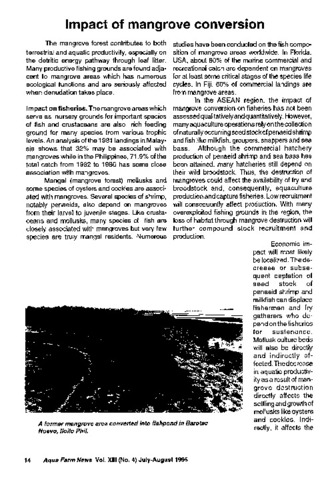The synergistic impacts of anthropogenic stressors and COVID-19 on aquaculture: A current global perspective
- Global styles
- MLA
- Vancouver
- Elsevier - Harvard
- APA
- Help

Download URL
www.tandfonline.comDate
2022-01-02Author
Page views
4,983ASFA keyword
Metadata
Perlihat publikasi penuh
Share
Abstract
The rapid, global spread of COVID-19, and the measures intended to limit or slow its propagation, are having major impacts on diverse sectors of society. Notably, these impacts are occurring in the context of other anthropogenic-driven threats including global climate change. Both anthropogenic stressors and the COVID-19 pandemic represent significant economic challenges to aquaculture systems across the globe, threatening the supply chain of one of the most important sources of animal protein, with potential disproportionate impacts on vulnerable communities. A web survey was conducted in 47 countries in the midst of the COVID-19 pandemic to assess how aquaculture activities have been affected by the pandemic, and to explore how these impacts compare to those from climate change. A positive correlation between the effects of the two categories of drivers was detected, but analysis suggests that the pandemic and the anthropogenic stressors affect different parts of the supply chain. The immediate measurable reported losses varied with aquaculture typology (land vs. marine, and intensive vs. extensive). A comparably lower impact on farmers reporting the use of integrated multitrophic aquaculture (IMTA) methods suggests that IMTA might enhance resilience to multiple stressors by providing different market options under the COVID-19 pandemic. Results emphasize the importance of assessing detrimental effects of COVID-19 under a multiple stressor lens, focusing on areas that have already locally experienced economic loss due to anthropogenic stressors in the last decade. Holistic policies that simultaneously address other ongoing anthropogenic stressors, rather than focusing solely on the acute impacts of COVID-19, are needed to maximize the long-term resilience of the aquaculture sector.
Description
Suggested Citation
Sarà, G., Mangano, M. C., Berlino, M., Corbari, L., Lucchese, M., Milisenda, G., Terzo, S. M. C., Azaza, M. S., Babarro, J., Bakiu, R., Broitman, B., Buschmann, A., Christofoletti, R., Deidun, A., Dong, Y., Galdies, J., Glamuzina, B., Luthman, O., Makridis, P., ... & Helmuth, B. (2022). The synergistic impacts of anthropogenic stressors and COVID-19 on aquaculture: A current global perspective. Reviews in Fisheries Science & Aquaculture , 30(1), 123-135. https://doi.org/10.1080/23308249.2021.1876633
Type
ArticleISSN
2330-8249; 2330-8257Koleksi
- Journal Articles [1256]
Except where otherwise noted, this item's license is described as Attribution-NonCommercial-NoDerivatives 4.0 International
Related items
Showing items related by title, author, creator and subject.
-
Effects of CO2-induced ocean environmental changes on marine life: implications for aquaculture
Ishimatsu, Atsushi; Kurihara, Haruko (Aquaculture Department, Southeast Asian Fisheries Development Center, 2011)The world's oceans are becoming warmer and acidic. The atmospheric carbon dioxide concentration has increased from 280 ppm at pre-industrial revolution to above 380 ppm today. The 4th IPCC report predicts that it will range ... -
Impacts of mangrove conversion
Southeast Asian Fisheries Development Center, Aquaculture Department (Aquaculture Department, Southeast Asian Fisheries Development Center, 1995)The article presents the impact of mangrove conversion on fisheries and on coastal areas. The mangrove areas which serve as nursery grounds for important species of fish and crustaceans are also rich feeding ground for ... -
Development and conservation of Philippine mangroves: institutional issues
The decline of Philippine mangroves from half a million hectares in 1918 to only 120 000 ha in 1994 may be traced to local exploitation for fuelwood and conversion to agriculture, salt beds, industry and settlements. But ...






